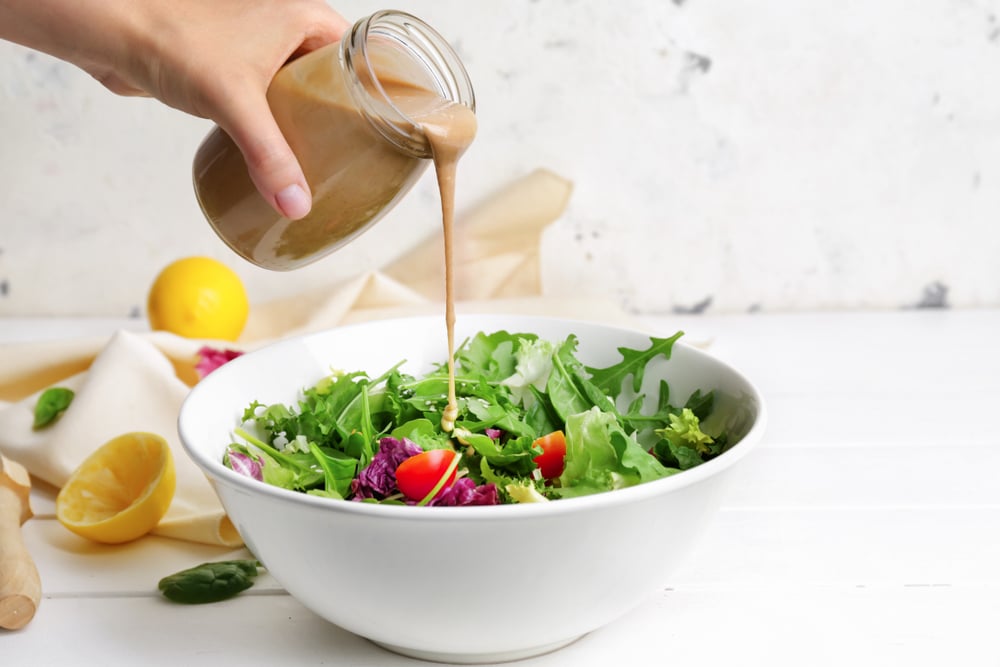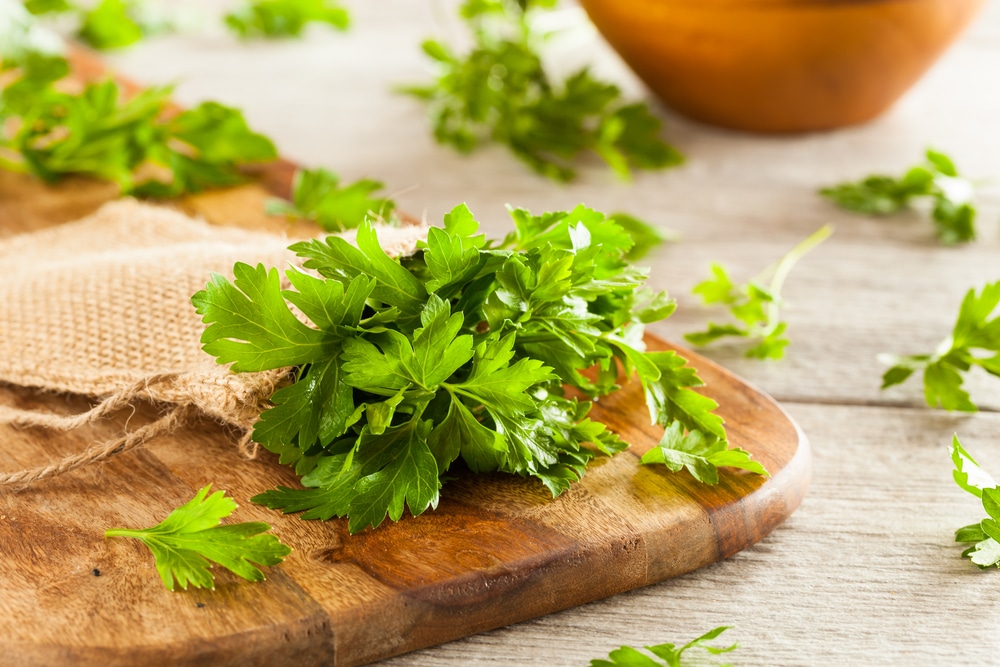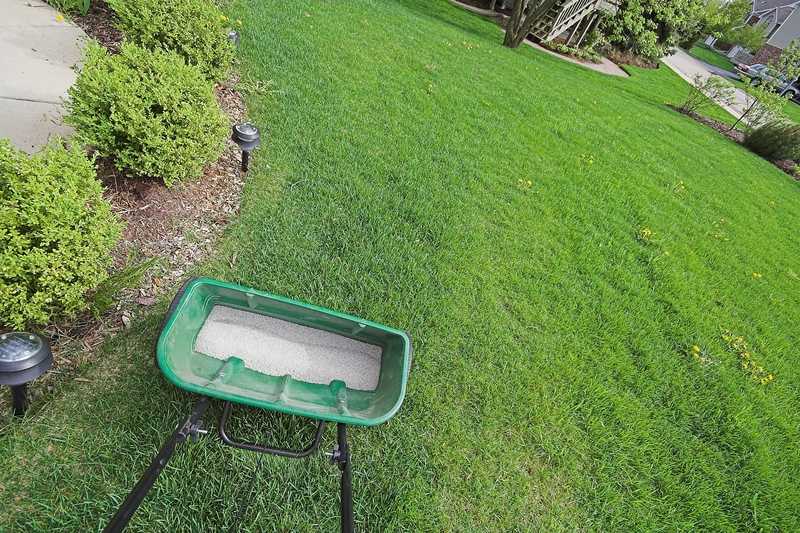
Parsley is a great leafy green vegetable rich in nutrients and adds a distinct taste to all the dishes you might be preparing.
That would make it the right choice to grow in your garden or backyard and use it directly from the plant for any recipes you might be preparing.
Not only does Parsley serve great for your kitchen if you grow it on your own, but it is also being cultivated at commercial levels in different sorts of farms, making it a perfect choice for you as well. A few things that you will need to know about extra Parsley are:
What to Do With Extra Parsley?
- Propagate
If you have a thing for gardening and some extra space, what could be better than growing more Parsley with the extra Parsley you have at your place?
It is pretty easy to grow and propagate it from the Parsley you have, and to make it possible, you will need to pick a healthy and thick stem and then remove all the leaves.
After that, you can place the stem in a glass of water for a couple of weeks until it grows roots. You need to make sure that you are also changing the water at regular intervals to ensure that no fungi can grow in the glass.
After the roots have grown on the stem, you can prepare the soil and then plant the stem with roots 2-3″ deep in the soil. Just keep on watering the stem, and within a few weeks, you will have a whole new plant of Parsley that you can use for anything you want.
- Dry The Parsley
If you are running out of space or don’t have the time to propagate Parsley, you can always take a different route and dry it instead.
All you need to do is cut the stem into small pieces and spread them on some kitchen towels. Afterward, let them sit for a few days and check it regularly.
Once the Parsley is completely dry, you can store them in airtight containers for a long period without worrying about contamination or spoilage. You can also grind them up into small pieces and use them as herbs whenever you need.
- Salad Dressing
Trimming Parsley leaves preserves the taste as well as the health of the plant. That would leave you with a lot of Parsley as it can grow within a few weeks back to the amount it was before. So, you will need to make sure you can use them best.
To make it possible, parsley leaves can easily be used for any salad dressing as they add the right fresh green vegetable taste to the salad, and that would be a great thing to have.
- Sauces
People use Parsley in various sauces, and you will not have to worry a little about that. You can add it to multiple recipes you can find for sauces and have the perfectly great savory taste for the sauces you might be looking for.
Besides that, the Parsley is simply great and adds taste and fresh aroma, texture, and nutrients to these sauces. This dip goes perfectly well with a wide range of dishes.
How to utilize extra Parsley?
Parsley is a versatile herb used in many dishes to bring out the flavor of other ingredients. It’s also an excellent source of vitamins and minerals, making it an ideal addition to any meal. But what if you have extra Parsley on hand?
Don’t let it go to waste — there are plenty of ways you can use up your extra Parsley! Here are some ideas for utilizing your extra Parsley, from salads and soups to pesto and sauces.
The first way to use excess Parsley is by adding it to salads. Parsley adds a refreshingly bright note in leafy greens or grain-based salads like tabbouleh.
You could even try making a vibrant green goddess salad dressing with fresh herbs like Parsley, basil, chives, dill, and thyme blended with olive oil, lemon juice, and garlic.
Another great way to use spare Parsley is in soups or stews. Parsley adds an earthy flavor while providing additional nutrients and color contrast – perfect for creamy potato soup or beef stew! For richer flavors, add dried oregano or chili flakes too!
Or why not make pesto with Parsley and other fresh herbs like basil, garlic, olive oil, nuts, and parmesan cheese? Serve it on top of grilled chicken or fish for an easy entrée.
You can use extra Parsley to create interesting sauces. Try blending it with olive oil, garlic, and lemon juice for a tangy vinaigrette, or use it as a creamy tzatziki.
If you’re looking for something out of the ordinary, why not make an herbal mayonnaise with Parsley and other fresh herbs? It’s perfect for sandwiches and dressings.
You can also dry Parsley and store it in an airtight container for up to a year. Once dried, Parsley can be used as-is or ground into a powder.
You can use the powder to add flavor to sauces and marinades or sprinkle it over salads, roasted vegetables, or grains for a pop of color and flavor!
Whether you’re using fresh or dried Parsley, there are plenty of creative ways to utilize this flavorful herb. Try adding it to your next meal for a tasty and nutritious boost.
How to store Parsley?
Parsley is a flavorful, nutrient-dense herb that can be used to add flavor and texture to a variety of dishes. To ensure that this versatile herb remains as fresh as possible for an extended period, it’s important to store it properly.
The best way to store Parsley is to place the stems in a jar of cold water and cover them with a plastic bag or wrap the leaves loosely in damp paper towels. Place the jar in the refrigerator, where Parsley will stay fresh for up to two weeks.
Freezing is another effective option if you have an abundance of Parsley that you need to store even longer. Start by chopping the Parsley and blanching it in boiling water for two minutes.
Immediately after blanching, place the Parsley on a baking sheet lined with parchment paper and place it in the freezer until frozen.
Once frozen, transfer it to an airtight container or resealable plastic bag and store it in the freezer for up to six months.
No matter which storage method you use, check the Parsley regularly for signs of spoilage and discard any wilted or brown spots. When stored properly, Parsley can be a delicious addition to your meals throughout the year.
What’s the healthiest use of Parsley?
Parsley is a versatile herb that can be used in many ways to add flavor and nutrition to meals. It’s low in calories, fiber, and vitamins A, C, and K, making it an excellent addition to any diet.
But how you use parsley matters; the healthiest way to get the most out of this herb is by using it fresh or lightly cooked.
Fresh Parsley can be added as a garnish or sprinkled on top of salads, soups, and other dishes for a burst of flavor without adding extra fat or sodium.
If cooking with Parsley, try adding it at the end, so its nutrients are not lost through excessive heat exposure. You can also blend fresh parsley leaves into smoothies or pesto sauces for an easy way to get more greens into your day.
Is Parsley healthy and safe for everyday consumption?
Parsley is a popular herb that has been used for centuries in many cultures around the world. It’s known for its distinct flavor and aroma, but it also provides numerous health benefits.
Parsley can be eaten fresh or dried, an excellent source of vitamins A and C, iron, and fiber. But is Parsley safe to eat every day?
The answer is yes! Regularly consuming Parsley may help reduce inflammation, support heart health, improve digestion, fight cancer cells, protect against diabetes-related damage to the eyesight and kidneys, boost immune function, and much more.
Since Parsley contains very few calories with no fat or cholesterol content, it’s a healthy addition to any meal plan without adding unwanted calories or unhealthy ingredients.
So if you’re looking for a way to add some extra nutrients into your diet while keeping your calorie count low, eating lots of fresh Parsley could be just what you need!
Conclusion:
Parsley is an incredibly versatile and nutrient-dense herb that can be used to add flavor and texture to a variety of dishes. It’s also low in calories, fiber, and vitamins A, C, and K, making it an excellent addition to any diet.
To get the most out of this amazing herb, you should store Parsley properly, so it remains fresh for as long as possible.
Eating fresh or lightly cooked Parsley provides numerous health benefits, such as reducing inflammation and protecting against diabetes-related damage.
So if you’re looking for a way to boost your nutrition intake without adding unwanted calories – adding lots of fresh Parsley to your meals is a great way to start!
Overall, Parsley is an incredibly healthy and safe addition to any meal plan, so don’t hesitate to incorporate this amazing herb into your daily routine.



